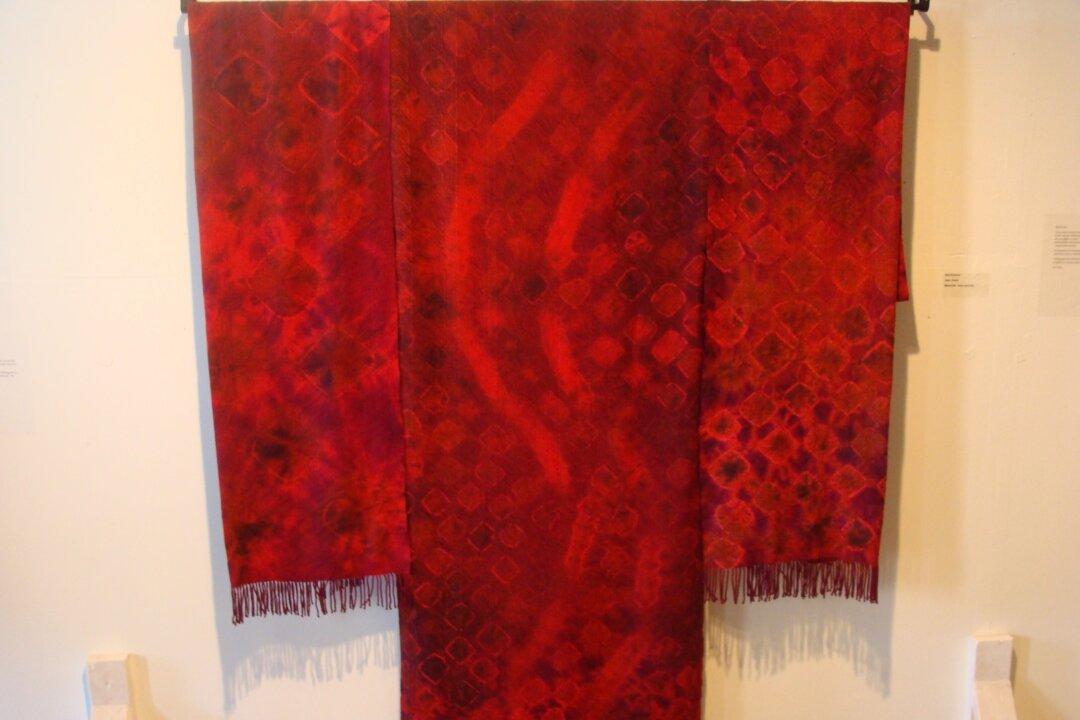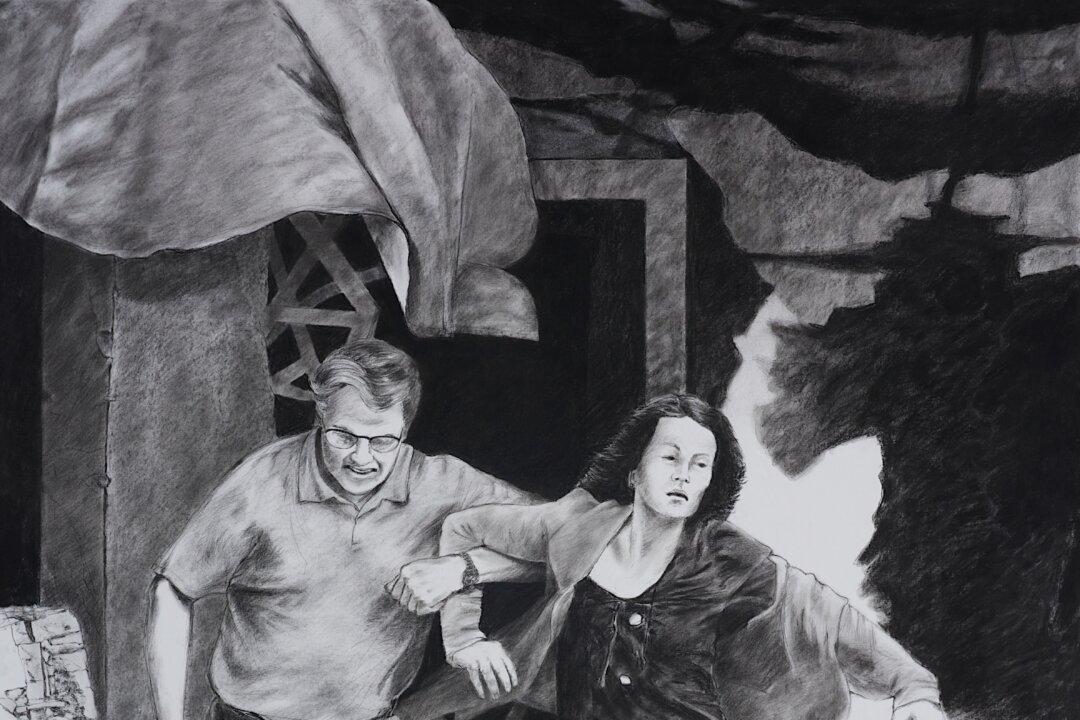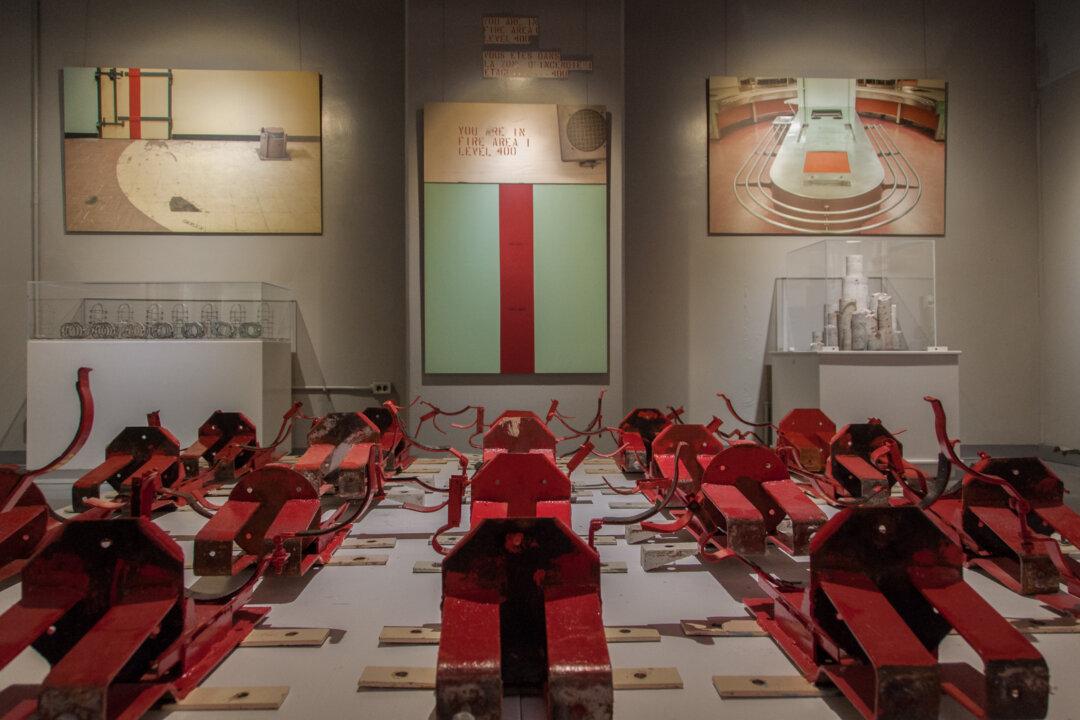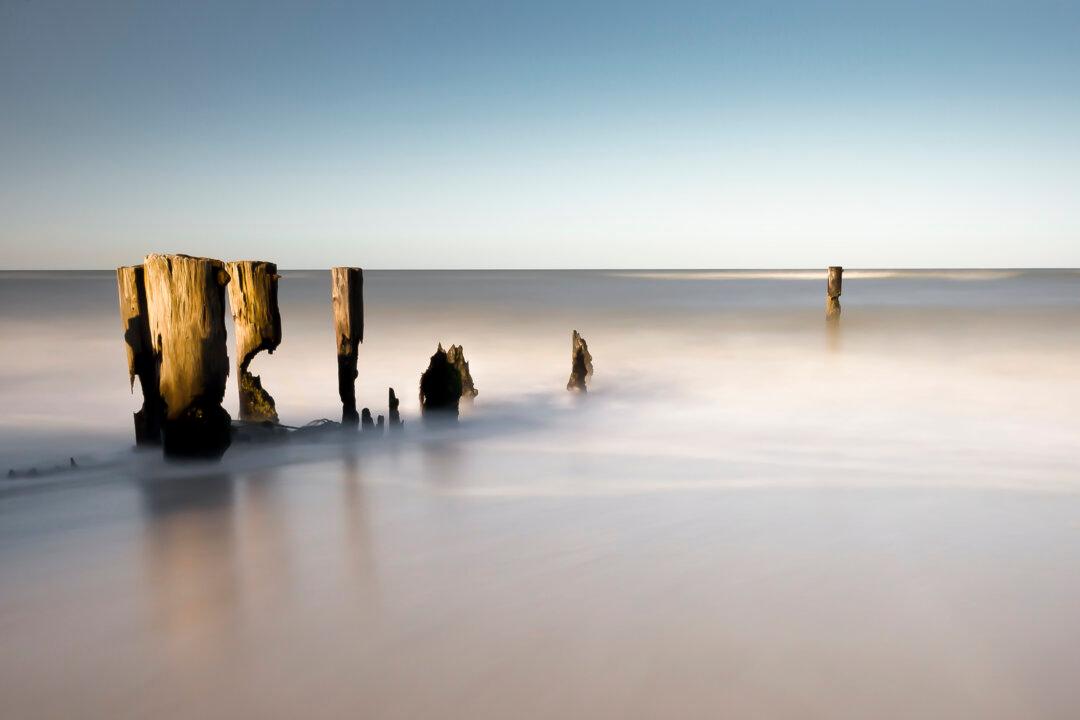Not far from downtown Ottawa is the old mill town of Almonte. Its identity, then and now, is one formed by the Mississippi River, one of the more dramatic tributaries of the Ottawa River. At Almonte, the river’s waterfalls and rapids were once the power source for seven mills whose woolen products were shipped half the world over.
Today, all of Almonte’s mills are closed, but not forgotten. The Mississippi Valley Textile Museum, a national historic site, occupies one of the grand old stone buildings.
“A Collaboration,” the current exhibition at the museum, displays the work of three textile artists from the region—Pattie Dolan, Jean Down, and Roberta Murrant. They were introduced to one another by Michael Rikley-Lancaster, curator-director of the museum. He suggested the artists collaborate—sharing materials, ideas, techniques—in order to create large works together, as well as smaller individual works.
Would the old maxim “many hands make light work” point the way to new understandings of their own work, too? It did. In this exhibition we see several wonderful outcomes.
Upon entering the gallery, the visitor first sees a small, spare, simple work by Pattie Dolan titled “Study in Red.” It consists of two woolen rectangular panels, flat weaves, one atop the other. The reds are dark and quiet. They lead the eye to the gallery’s back wall.
On the back wall is a larger work, “Red Kimono,” created by Jean Down. It also combines rectangles, in this case, three shawls woven of silk and wool. The artist uses ne-maki-shibori, a Japanese resist dying technique, to dye her threads. Their colours are rich reds, pinks, and purples with purple fringes.
Nearby hangs “The Waterfall” by Roberta Murrant. A tapestry woven of wool, “The Waterfall” is a pictorial tribute to the old mill town’s mighty river. We see the river straight on, tumbling into a cascade of whitewater frothing at our feet. The artist’s illusion is wonderfully effective. Piled on the floor at the bottom of the tapestry is a heap of raw wool. It really does—for a moment anyway—look like a whitewater cascade. Outside, we can hear the roar of the river, swollen in snow-melt. “The Waterfall” is nearly 2 metres in height.
Another collaboration pays homage to seasonally barren trees and rocks. Free-hanging large panels of fabric move gently in the gallery’s air currents, each designed by one of the three artists, all in muted tones of brown.
Among them is “Roy’s Salamanders,” a large silk panel designed by Down, who credits her work to “the decay of natural materials, such as leaves, seeds, and soil and rust.” The fabric was “buried in the ground, hung in trees, and wrapped around stones.” Its brown colour is a walnut dye “from Judy’s tree on Union St. in Almonte. The salamanders are for Roy.”
Dolan, on the other hand, arrives at her subtle changing colours in the eight hanging panels comprising “Untitled” by changing materials. She uses cotton, silk, bamboo, and rice paper. Murrant’s triptych “Birth Life Death” is an elegant study of circular lines woven of silk and copper thread.
All three artists express the hope they will have the opportunity to continue “to collaborate.” In the best curatorial tradition, curator Michael Rikley-Lancaster’s insights support and extend their work.
“A Collaboration” will be on display at the Mississippi Valley Textile Museum until June 28.
Maureen Korp, PhD, is an independent scholar, curator, and writer who lives in Ottawa. Author of many publications, she has lectured in Asia, Europe, and North America on the histories of art and religions. Email: [email protected]
A Collaboration in Fibre Art
Not far from downtown Ottawa is the old mill town of Almonte. Its identity, then and now, is one formed by the Mississippi River, one of the more dramatic tributaries of the Ottawa River. At Almonte, the river’s waterfalls and rapids were once the power source for seven mills whose woolen products were shipped half the world over.

“Red Kimono” by Jean Down, silk and wool. Courtesy Mississippi Valley Textile Museum
|Updated:




